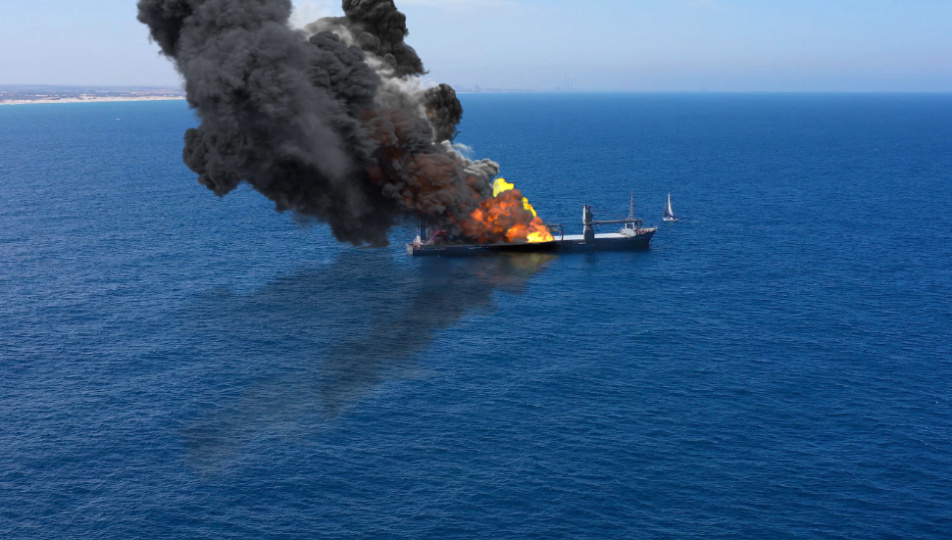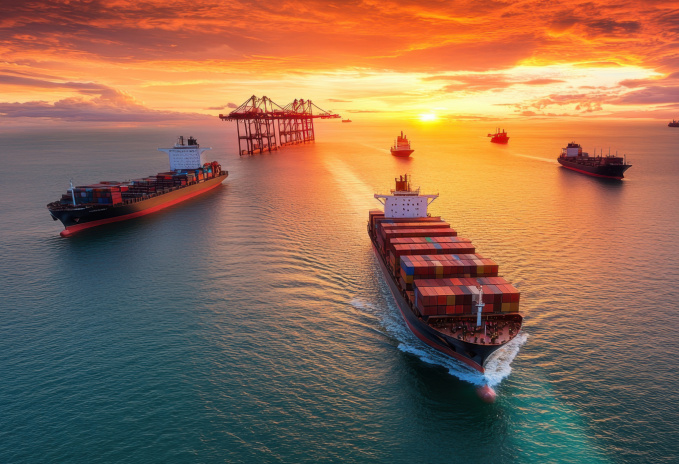Floating fires

Fire - everybody's afraid of it, and sailors doubly so. It may seem absurd - after all, the ship is afloat and is therefore surrounded by an endless supply of suitable substances to put out the fire.
Fire - everybody's afraid of it, and sailors doubly so. It may seem absurd - after all, the ship is afloat and is therefore surrounded by an endless supply of suitable substances to put out the fire.
Despite this, ship fires claim many lives and the loss of entire ships every year. All those who work on a cargo ship must be properly trained in extinguishing various types of fires, and it can be said that well-trained crews reach the level of volunteer firefighters on land. However, even this often fails to prevent disaster. Ships are, by their very nature, floating sources of fire - fires can break out almost anywhere and can take many forms - burning oil in the galley, fuel catching fire in the engine room, electrical fires on the bridge, burning paint stores on the main deck and, last but not least, cargo catching fire in the hold.
In this article we will focus on cargo fires on container ships. Sea containers are the most frequent source of fire among all cargo types carried (followed closely by certain spontaneously ignited bulk cargoes carried on bulkers). These fires are very specific and very difficult to fight.
Containers are placed in several layers both on the main deck and in the hold. They may contain dangerous flammable cargo or, for example, ordinary paper with a low ignition temperature. A ULCS carrying 18,000 containers could theoretically have a different cargo with different chemical properties in each one. A burning, hard-to-reach container in the middle of the hold can become the basis for a chain reaction of ignition of adjacent containers, resulting in a fire of the entire hold and eventually the entire ship. So everyone would expect that container ships are specially equipped with adequate fire-fighting systems.
However, the opposite is true - until 2016, when the modification of the SOLAS Convention and its fire regulations for container ships came into force, these ships had the same fire-fighting equipment as bulk carriers and general cargo ships, i.e. ships with completely different cargoes whose fire-fighting systems are relatively simple and meet most of the minimums required by the conventions. However, even after this modification, the fire protection of container ships is not sufficient.
So what is the typical firefighting equipment of today's container ships? First of all, it is at least two high-volume fire pumps that supply seawater under sufficient pressure to hydrants on the main deck and in the hold. A CO2 flood system is also used to extinguish fires in the hold, which can fill the entire hold with this gas, which is heavier than oxygen, in a matter of seconds and thus smother the fire.
This method of extinguishing cargo fires in confined spaces is quite effective for certain bulk cargoes, but not so much for containers, as CO2 gas cannot penetrate the container in sufficient quantities. And because the ship's supply of this gas is limited and must also be sufficient to extinguish the engine room, the main method of extinguishing fires in the hold and on the decks of container ships is with water.
For this purpose, the ships are equipped with an adequate number of fire hoses and protective fire suits for the personnel. These systems, together with a few other requirements for ships carrying dangerous goods (more fire extinguishers, better ventilation of the hold, more breathing apparatus), were the minimum required for container ships built before 2016. By comparison, tankers, in addition to all these measures, are equipped with a fixed foam system that can flood the entire deck with heavy foam, and their tanks are protected by an inert gas that prevents the cargo from catching fire. So are three extra fire extinguishers per hold and a more powerful pump adequate protection for ships that often carry more dangerous cargo than a tanker? The year 2016 brought two new developments for container ships. The first is the so-called water mist lance, which is a narrow jet line that is pushed through a drilled hole in the container and extinguishes the fire with a high-pressure water mist. The other new feature is a prescribed number of portable water sprayers, which are easier to use than conventional hoses. However, even with these two new additions to the equipment, crews are not able to extinguish all types of fires. Some fires are exacerbated when water is poured over them, and fires below deck in hard-to-reach areas are difficult to extinguish even with this equipment.
Another disadvantage of container ships is their construction - they lack natural firebreaks. The only such bulkhead is the superstructure with the crew quarters and, in the case of new ships, also the engine room superstructure. These two separate structures, which also house all the ship's life-saving equipment, are surrounded by cargo.
On container ships, fires usually spread by heat transfer between containers, so that if the entire cargo section in front of/behind the superstructure catches fire, the fire is already so large that it cannot be fought. This type of fire reaching high temperatures would be a challenge even for specialist firefighters with all their modern equipment and infrastructure, let alone a crew with only basic resources. The crew also cannot rely on the help of nearby ships (they are as well equipped as they are) - powerful firefighting equipment is only installed on rescue ships and tugs, which can only reach the burning ship after several days.
Nor can the crew hide in safety and let the fire burn out - the alternative of evacuating the ship is in many cases impossible. According to statisticians, the crew is able to extinguish a fire of one to two containers (!). Also, early detection of fire is in many cases difficult to impossible - for example, the fire detection system in the hold often starts working only when the whole hold is filled with smoke, which is too late and, moreover, it cannot indicate the exact position of the fire without additional equipment (thermal imaging).
That is why fires on container ships are so dangerous and why people will continue to die in them. In the first quarter of 2019, there were 8 reported container fires - 4 on board and 4 on land (these are reported fires only), of which 4 were severe enough to be classified as major fires. A well-known case is the fire of the KMTC Hong Kong in the Thai port of Laem Chabang at the end of May this year.
This fire, which injured 130 people, ignited and subsequently exploded 35 containers containing apparently undeclared oxidising agents and paraffins. Other well-known incidents include the fires on the Maersk Honam (5 dead) and MSC Flaminia (3 dead) and, last but not least, the explosion at the container terminal in the port of Tianjin (173 dead).
So how can the fire protection of container ships and the containers themselves be improved?
First of all, new protection systems need to be put in place. Among the proposed changes are the modification of the ship's structure and the addition of fire-resistant bulkheads on the decks and in the hold, additional fixed fire foam and fogging systems on the decks and in the hold, and a higher density of fire sensors and installed thermal imaging.
The containers themselves (at least those carrying dangerous goods) should be equipped with their own sensors and a separate fire extinguishing system. In addition, two professional firefighters should be present on large container ships to be in charge of fire control of the cargo only. Security would also be improved by better exchange of cargo information between shipowners and more effective detection of undeclared dangerous cargo.
International conventions are changing very slowly and it is therefore good that the initiative in this direction has been taken by the classification societies and P&I clubs and the breeders themselves. The former make recommendations and specify additional technical equipment for boats beyond the international rules. The shipowners have set up the CINS (Cargo Incident Notification System), which already brings together 17 companies, to collect information anonymously on cargo incidents and to draw up recommendations and guidelines for the carriage of certain dangerous cargoes, with a focus on fire safety.
However, as it happens in the business world, money is always at a premium and the above mentioned solutions are quite expensive (especially when it comes to installation on existing ships), which is why ship operators are not very keen on them. Also, from an insurance point of view, there is very little pressure to make changes - the value of cargo lost in fires is still relatively low to force people to do anything. Above all, however, the lives of those who sail on ships and who are at risk in the event of a fire are recklessly forgotten. We will therefore hope (again) that the rapid increase in the number of fires on container ships will be sufficient motivation for the IMO to fundamentally rethink the current one.


